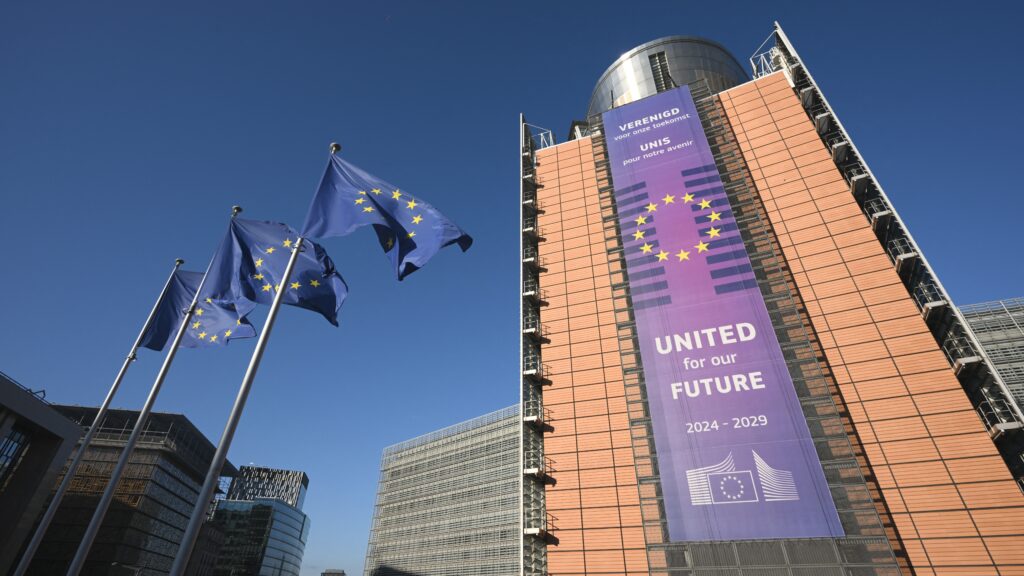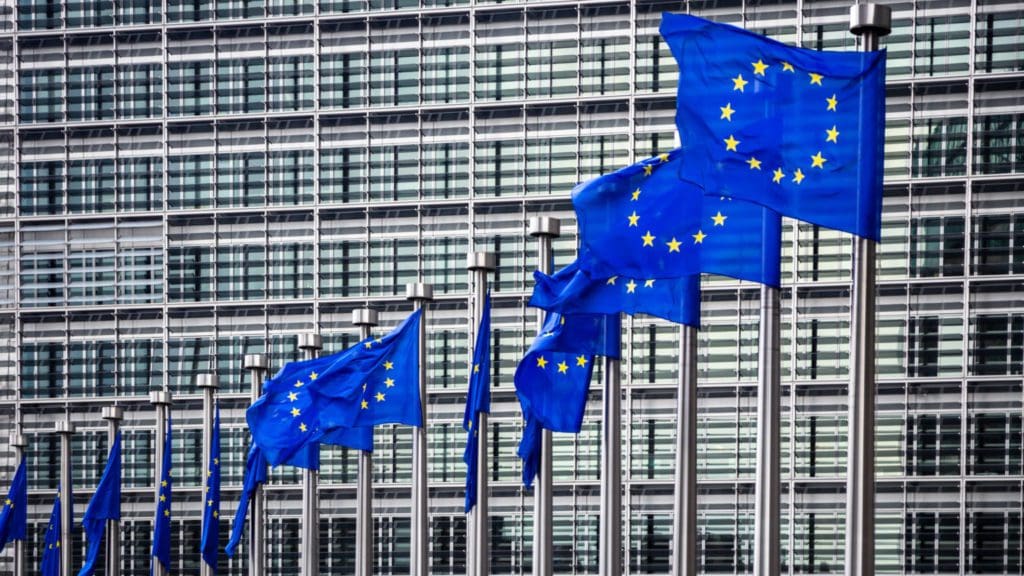As President of the European Commission Ursula von der Leyen presented the European Green Deal on 11 December 2019, she outlined a set of principles for climate policy and structural change in economy and described this as a ‘man on the moon’ moment. The President of the Commission envisioned Europe as a global leader in the fight against climate change. In her eyes, Europe can achieve this goal in a unique way by balancing economic growth and environmental protection and can, in the meantime, strengthen its position in the world economy. Simultaneously, her concept, stemming from the ‘green’ logic, gave the European Union’s geopolitical and trade relations a specific moral context. Although there may be tension between the two objectives, the concept itself is not sinister. What is more, there is a legitimate expectation for the leaders of the European Union to possess a vision, distinguish the actions of their community from those of competing actors in a globalized world, and set a direction for the decades to come. However, morality must also be rational.
Ursula von der Leyen announced the plan saying: ‘We do not have all the answers yet. Today is the start of a journey.’ Even then, the well versed could notice that, despite its noble aims, the Green Deal was short on substance. That became clear immediately upon its announcement. Experts warned right from the outset that lacking in-depth impact assessments, achieving the set targets, such as full climate neutrality by 2050, is not more than chasing a mirage. Yet, a plan that drastically changes the economic structure of an entire community cannot solely rely on naïve assumptions. And there is no John Maynard Keynes behind the Green Deal, to say the least.
The years since the announcement have only confirmed the pessimistic voices. Despite billions of euros being spent and all the efforts made, it is already clear that only a few countries will be able to meet the renewable energy targets set by the European Commission for 2030. Additionally, according to several EU bodies, achieving the emission reduction targets is also seriously inconceivable in most Member States. The European Court of Auditors formulated similar concerns in June 2023, and the European Commission in December 2023. The former warned about a ‘significant gap’ between the resources allocated to climate targets and the amounts deemed necessary by experts.
To the best of our knowledge, it is hard to justify in economic terms that green growth exerts any significant positive impact on GDP. According to Barclays, the costs of the global green transition could reach up to 300 trillion dollars by 2050. To pull it off, 2–8 per cent of global GDP would be needed to be spent on the transformation. However, forced green transition not only costs a fortune but also has a significant inflationary effect. Consequently, one of the major challenges for the transition in the upcoming years will be green inflation. This will be driven by increased demand due to costly raw materials used in green technologies and ongoing investments, and by policies that impose higher costs on traditional industries.
The European Parliament’s research service calculates that the aggregate GDP by 2030 might be 0.4 per cent below the baseline. The most optimistic forecast indicates that GDP could be approximately 0.5 per cent above the baseline by 2030. According to a 2023 OECD estimate, overall employment is projected to increase by 1.3 per cent in the Fit for 55 scenario (which is part of the Green Deal) between 2019 and 2030. This increase is lower than the 3 per cent that would have occurred without the policy package. By 2030, the employment of blue-collar and farm workers is projected to decrease by 3 per cent, compared to a 2 per cent decline in a scenario in which the policy was not implemented.
‘We cannot build the European Union without and against the will and interests of the people’
Apart from the numbers, however, it is also worth taking stock of how the people of Europe who were left out of the agreement feel about the green package. Stepping out of the Berlaymont building in Brussels, one can immediately see Belgian and French farmers demonstrating, German car manufacturers protesting, Polish beekeepers grumbling, Cypriot fishermen disgruntling, and Bulgarian coal miners raging. These people, who form the foundation of Europe’s economy and prosperity, rightfully feel disappointed. We cannot build the European Union without and against the will and interests of the people. While the founding treaties grant the European Commission and the majority of Member States extensive legislative powers due to the concept of the single market, a significant commitment such as climate neutrality should not be decided solely by a few Commissioners and Directors-General.
While the ‘man on the moon’ moment is lost somewhere in the emptiness, European bureaucrats have already begun their journey. And Brussels is prepared to launch all of Europe into space. There are concerns that, if they do not return to Earth soon, millions of European jobs could be at risk, thus affecting the livelihoods of millions of people. Many people are raising alarm, but in space, without air, sound does not travel. All quiet on the Commission’s spacecraft, while everyone back home is shouting.
The European Union’s old-new leaders seem to be disconnected from the outside world and from geopolitical, economic, and technological realities. In comparison, after the 1973 oil crisis, President Nixon announced Project Independence, a policy of self-sufficiency and self-dependence, while Europe, chasing and getting addicted to green ideas, seems more focused on Project Greendependence. Hence, Europe became obsessed and dependant on anything that is said to be green. There is a clear-cut difference between the two policies: whereas America tends to work on solving problems, Europe tends to embrace them.
Leaving no doubt, climate change is an undeniable scientific fact. However, it is important to note that the European Union is only responsible for 7 per cent of greenhouse-gas emissions and cannot single-handedly reduce these global processes significantly. For example, Hungary is projected to be responsible for only 0.1 per cent of global emissions by 2030, yet the measures taken by the European Union are imposing a substantial financial burden on our economy. It is worth to note at this point that carbon dioxide, much like political ideology, knows no borders!
Thus, it seems unrealistic for the European Union to become fully carbon neutral by 2050. China, the flagship of green transition today, towers above Europe in green industry, electromobility, and energy storage; still, it is projecting a transition to a zero-emission economic model no earlier than 2060. How could Europe achieve carbon neutrality if it is so heavily reliant on China for technology, knowledge, and raw materials? So, ideology notwithstanding, it is unreasonable to exclude China from our climate-neutrality calculations.
‘How could Europe achieve carbon neutrality if it is so heavily reliant on China for technology, knowledge, and raw materials?’
In 2022, the United States, the second-largest emitter, was responsible for about 12 per cent of global emissions, while the third-largest India accounted for more than 7.3 per cent. Although the Asian country has set ambitious targets, an analysis by IMF suggests they may struggle to meet their 2030 carbon-emission goals. The organization predicts that India’s emissions could increase again after 2031, with a subsequent decline only expected after 2040. These figures indicate that if Brussels believes it can influence global trends to align with its own plans, it is underestimating the challenge.
In light of the above, we must release our unrealistic expectations and recalculate our previously set targets. It is equally important to carefully consider what the ‘car of the future’ will be and to avoid rushing decisions based solely on desires. The European Union views electric cars as a panacea and puts a damper on the automotive industry, so crucial to the European economy. Bureaucrats are pushing for a restriction so that new cars should only be electric by 2035, effectively ending a century-old European knowledge industry centred around combustion engines. We believe this is a complex technological issue, and such drastic measures should not be taken to interfere with the daily lives of European citizens, families, and businesses. The target date of 2035 should, therefore, be also reconsidered and abandoned.
If the European Union’s flagship industries, such as technology, chemicals, and automotive, are compelled to leave Europe due to inconsistent and burdensome regulations, while China embraces them eagerly, pollution will still occur, but the profits will not be realized in Europe. The European Union is shooting itself in the foot, and the only way out of this self-destruction is to require its trading partners to do the same. However, this would mean compromising its interests in other areas, diminishing the effectiveness of other policies, and further undermining its already weakened competitiveness.
According to data from Santander, 15 years ago the European economy was 10 per cent larger than the US economy, but by 2022, it came to be 23 per cent smaller. The European Union’s GDP grew by 21 per cent over that period, compared with 72 per cent for the United States and 290 per cent for China. Europe’s influence, once based on industrial technology and innovation, has eroded in almost all areas of the economy. If this trend continues, Europe will have no control over the quality standards of the products sold on its market. The lack of major European players in the market for new technologies who can significantly shape development agendas is a sign of structural weaknesses and of a misguided strategy. The mandatory shift towards environmentally-friendly practices is hampering the competitiveness of European industries, particularly in the chemical, pharmaceutical, energy, and automotive sectors.
In the meantime, the European Union keeps pumping out its green laws and initiatives, such as Fit for 55, ETS, CBAM, LULUCF, RED, EED, SCF, AFIR, and EPBD. It is understandable if these terms do not ring a bell, as the language used in the Green Deal comes neither from economy nor from conservancy; it is particular to Brussels and needs a codebook to decipher, while ETS alone affects over 10,000 power plants and factories all across the continent.
‘If this trend continues, Europe will have no control over the quality standards of products sold on its market’
It is time to take a deep breath and acknowledge that the boat is sinking, while the captain is busy with rearranging the benches. We must admit that Europe’s leaders have lured themselves into a fantasy. It needs to be made clear that the new institutional cycle cannot follow in the footsteps of the previous one. It also needs to be pointed out that the Green Deal is indeed not a Good Deal.
We all want to leave our children a world worth living in. There is no dispute about this among the members of European nations. Protecting the created and built world is not only our goal but also our duty. But to do so, we need sensible solutions. Firstly, we need to involve all stakeholders. The voices of those who bear the burden of the green transition must also be heard and listened to. Recently, hundreds of representatives from European companies have urged the European Commission and Member States to take greater steps in making Europe more competitive. They argue that, without the right policies, EU companies are being outpaced by their US and Chinese rivals. Their expectations, as outlined in the Antwerp Declaration, are that European industry requires an Industrial Deal to complement the Green Deal. Secondly, priority should be given to solutions that can be realistically implemented. This entails re-evaluating how rules are created, reducing administrative burdens, and restructuring the financial framework necessary to fund EU objectives. Thirdly, the EU’s medium-term strategies must be formulated in a manner that significantly contributes to a flourishing and competitive economy. For this to be achieved, competitiveness considerations must be incorporated into individual policies using a comprehensive approach. It must be a common goal to support the creation of a technology-neutral industrial strategy and a framework that enhances European productivity. This includes promoting an open economy, fostering international economic cooperation, and establishing a flexible labour market, absolutely crucial to growth and competitiveness, that provides secure jobs in Europe and offers increasing wages.
We must encourage the future European Commission to take advantage of the change in the institutional cycle and to conceptually reconsider the elements of the Green Deal and pledge to work for the European Union’s competitiveness, stable energy supply, and mutually beneficial international economic relations. This should be the Real Deal, a genuine agreement in a true European spirit.
Related articles:







